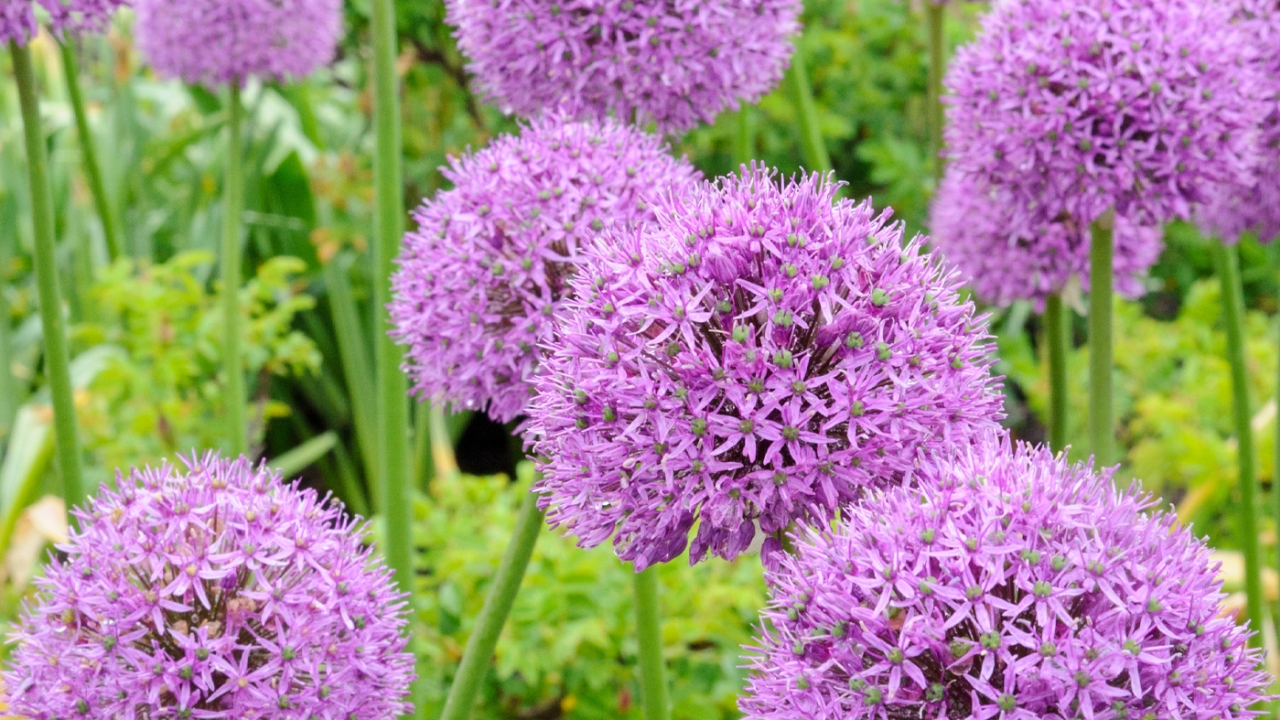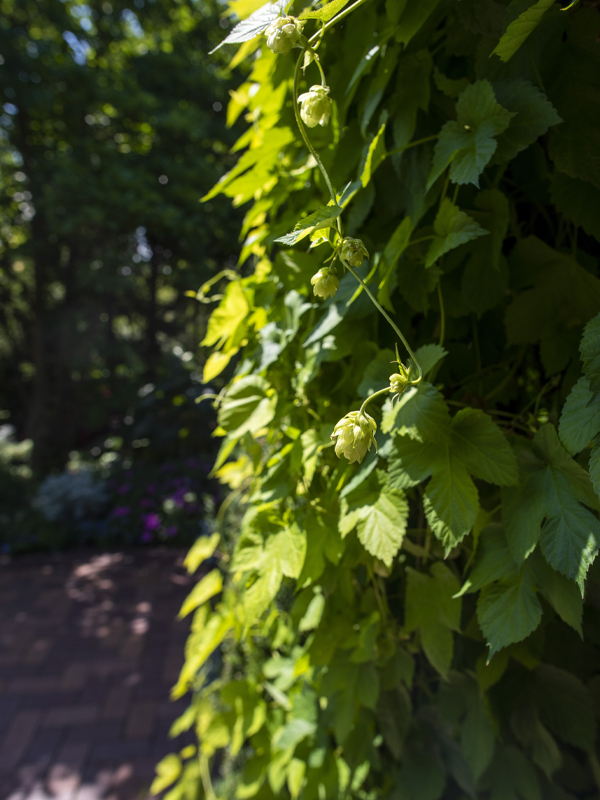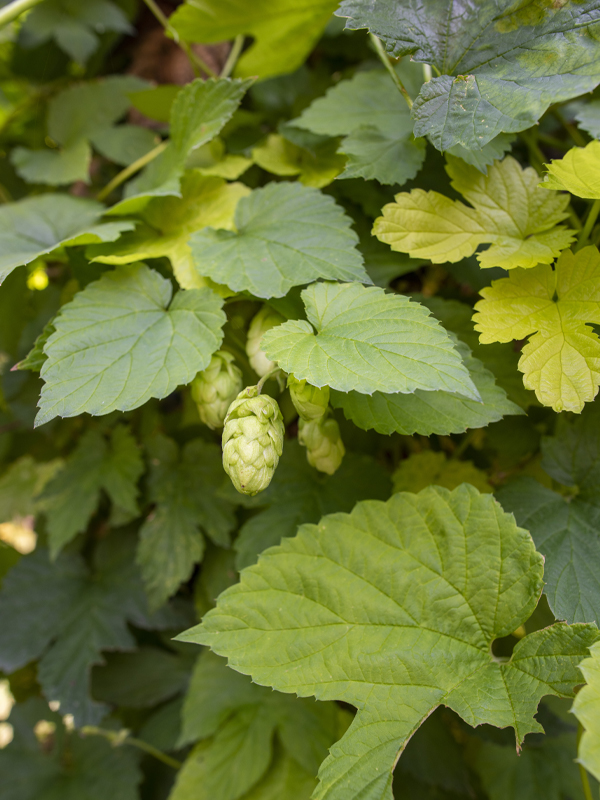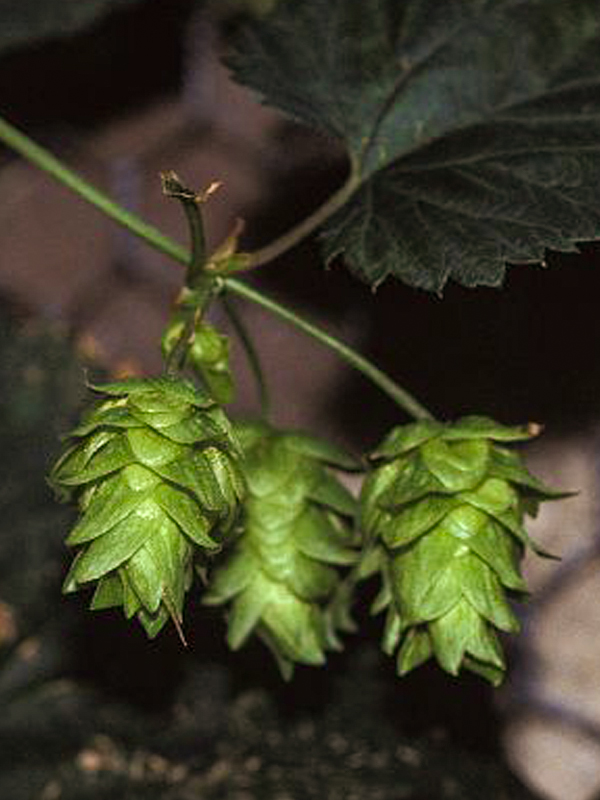

Hops
Humulus lupulus
The female flowers, or 'hops', of the common garden hop (Humulus lupulus) were the main calming agents in 'sleepy pillows', used to treat insomnia and headaches until the late 19th century. And mixing hops with boiling water was considered to make a good sedative. Today, these dried female flowers are a main ingredient in beer production. Their bitter, resinous properties dilute the heavy malted barley taste.
Medicinal uses and herbal restoratives aside, the hop vine is, ironically, a member of the hemp family, Cannabaceae, but is sometimes grouped into the larger and more diverse mulberry family, Moraceae.
Native to Europe and western Asia, Humulus lupulus is an attractive perennial vine suitable for Chicago-area gardens. During July, soft green conelike flowers known as strobiles emerge. Contrasting nicely with the foliage, these young flowers provide additional ornamental appeal. When the strobiles mature during mid- to late September, they can be collected for home brewing or other herbal uses.
The vine is dioecious, meaning that male and female flowers occur on different plants. Female plants grown apart from males will still produce hops, but not seed, and the hops will weigh less.
Native to the Northern temperate region, hop vines can twine up to 25 feet in a single season, quickly filling in fences, bowers or arbors. The only physical features of the vine that may warrant consideration are the bristly spines surrounding each stem. They are only 1/8- to 1/4-inch in size and not as bothersome as one would think, but gloves should be worn for pruning or handling the vines.
With their smaller bristles, cultivated varieties of hop are favored by gardeners over the straight species. Humulus lupulus 'Aureus', or golden hop, is a cultivar with yellow foliage and a restrained growth habit that is suitable for smaller Landscape Gardens. As the vine begins its climb, golden, maple-like leaves emerge in spring. The light-green flowers complement the yellow foliage and add a unique bit of interest to the garden during late summer and early fall. Bright yellow foliage persists into late fall, blending attractively with fall-blooming asters and ornamental grasses that lighten as they approach dormancy.
At the Chicago Botanic Garden, two plants of Humulus lupulus 'Aureus' scale the west side of the fence in front of the Children's Garden. There they receive full sun and are planted in highly alkaline soil. It has been observed that flower coverage is abundant when plentiful moisture is available during the spring and summer months, a condition favored by the species. Since plants will die to the ground when frost arrives, they should be cut to the ground at this time.
Revered historically for its herbal and intoxicant abilities, hop is now becoming increasingly admired for its ornamental appeal. With its climbing habit, hop is ideal for trellises and arbors; and because of its vigorous growth, it is a superior plant for screening. Plants require full sun and a moist, well-drained soil but will tolerate intense heat and perform well under urban conditions. The hop vine is disease-resistant and quite tolerant of pests, making it a dependable, low-maintenance perennial vine to brighten any garden.
And, like a good batch of beer, it is great for stimulating profound conversation.




